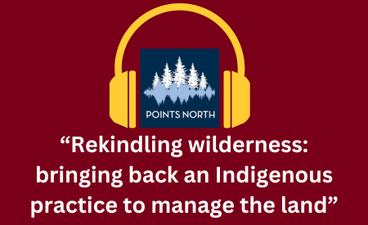
Points North podcast: "Rekindling wilderness"
From the Points North podcast: "Rekindling wilderness: bringing back an Indigenous practice to manage the land," an episode about using fire to cultivate forests. In it, reporter Patrick Shea visits the Cloquet Forestry Center to speak with research forester Lane Johnson about spotting fire damage on trees and how to learn about the history of fires from it.
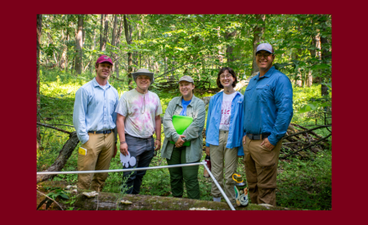
Six long-term research projects focused on invasive species and forest health conclude
In 2023, 14 invasive species research projects came to a close for the Minnesota Invasive Terrestrial Plants and Pests Center (MITPPC), six of which focused on forest health and involved researchers in the Department of Forest Resources. These projects tackled everything from detection and treatment of oak wilt to controlling buckthorn with other plants.
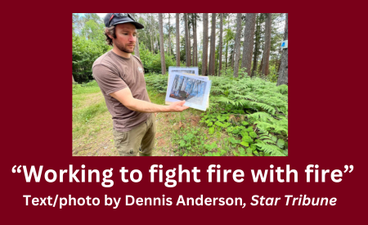
"Working to fight fire with fire"
Featured in the Star Tribune: "At the University of Minnesota's Cloquet Forestry Center, ancient uses of fire by Indigenous people and its many benefits are being researched."
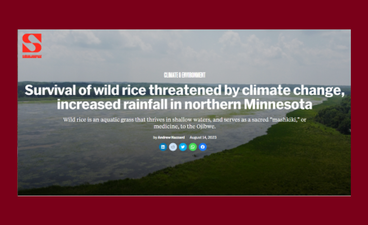
"Survival of wild rice threatened by climate change, increased rainfall in northern Minnesota"
Featured in the Sahan Journal and MPR: Increased rainfall in northern Minnesota is threatening the survival of manoomin [Ojibwe for "wild rice"]. Low water levels are critical for it to thrive, but more rain and flooding due to climate change is making wild rice harvests less reliable, writes reporter Andrew Hazzard.
Other factors, including dams built to aid the logging industry, have compounded the issue by keeping water levels too high in lakes for wild rice to grow.
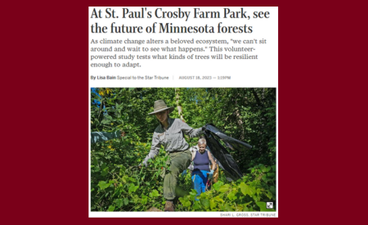
"At St. Paul's Crosby Farm Park, see the future of Minnesota forests"
Featured in the Star Tribune: The Adaptive Silviculture for Climate Change (ASCC) network just marked its third year of a 20-year resilience study at Crosby Farm Regional Park. It’s one of 14 ASCC studies happening across the U.S. and Canada that aims to help forest managers understand how climate change is affecting our woods – and to get a jump start on helping them to adapt.

U of M researchers investigate role of trees in stormwater management
From the Sahan Journal: "Trees can play a critical part in helping manage stormwater in cities. University of Minnesota researchers are helping build understanding that could help planners and foresters make better decisions."
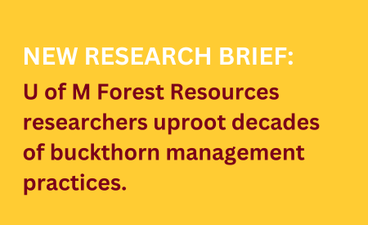
U of M researchers uproot decades of buckthorn management practices
According to new research, buckthorn managers have long overestimated the plant, and in doing so, have given the invasive tree a significant advantage in spreading widely and pushing native species out of woodlands and forests throughout eastern North America.
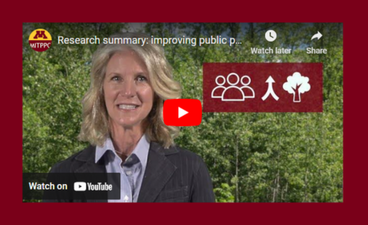
Research summary: Improving public perception of forest management of emerald ash borer
Public support is an important part of managing invasive species. In this video, Dr. Ingrid Schneider, professor in the Department of Forest Resources, University of Minnesota, provides a research summary for natural resource and forest managers on how to effectively communicate about management actions to increase public awareness and support

In the New York Times: "Some Squirmy Stowaways Got to the Artic. And They Like it There."
Featured in the New York Times: Earthworms are taking up residence in the Far North, land "that's been wormless since the last ice age," writes reporter Sofia Quaglia. Their presence has the potential to rapidly alter the balance of fragile northern ecosystems, but determining how they might do so is highly complicated. Forest ecologist and worm researcher Lee Frelich weighs in.

"Is Minnesota Forever Doomed to Smoky Summer Skies?" in Racket
Racket reporter Sean Ericson speaks with forest ecologist Lee Frelich and Cloquet Forestry Center scientist Lane Johnson along with other scientists, a tribal forest manager, a lung doctor, a respiratory therapist, and a sociologist to learn whether smoky summer air is Minnesota's new normal.
